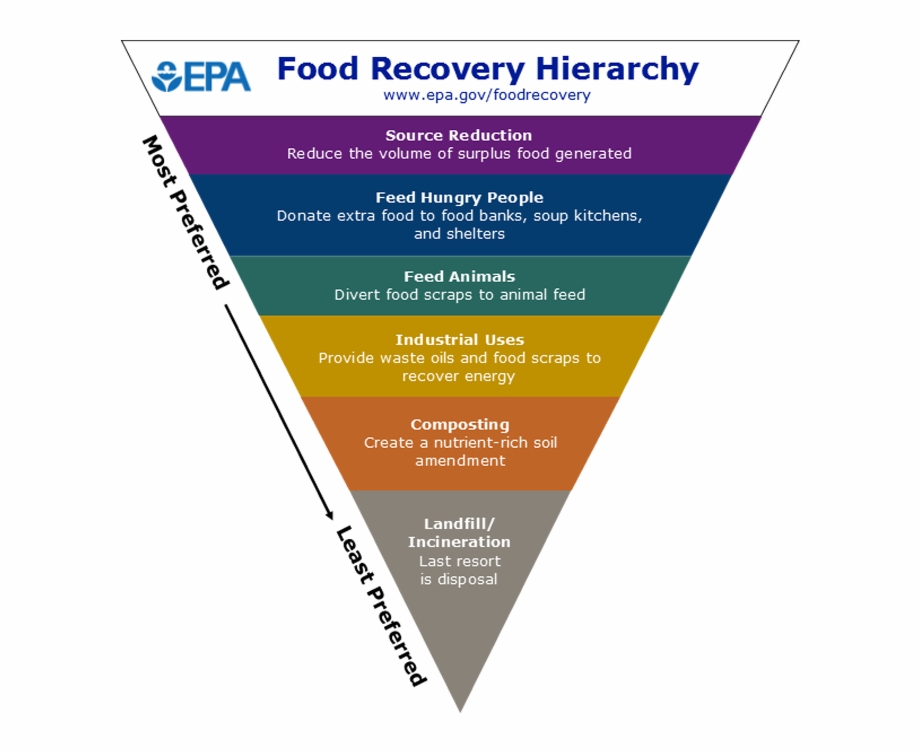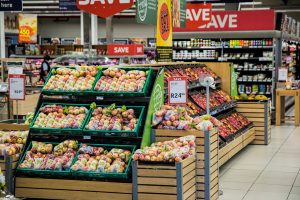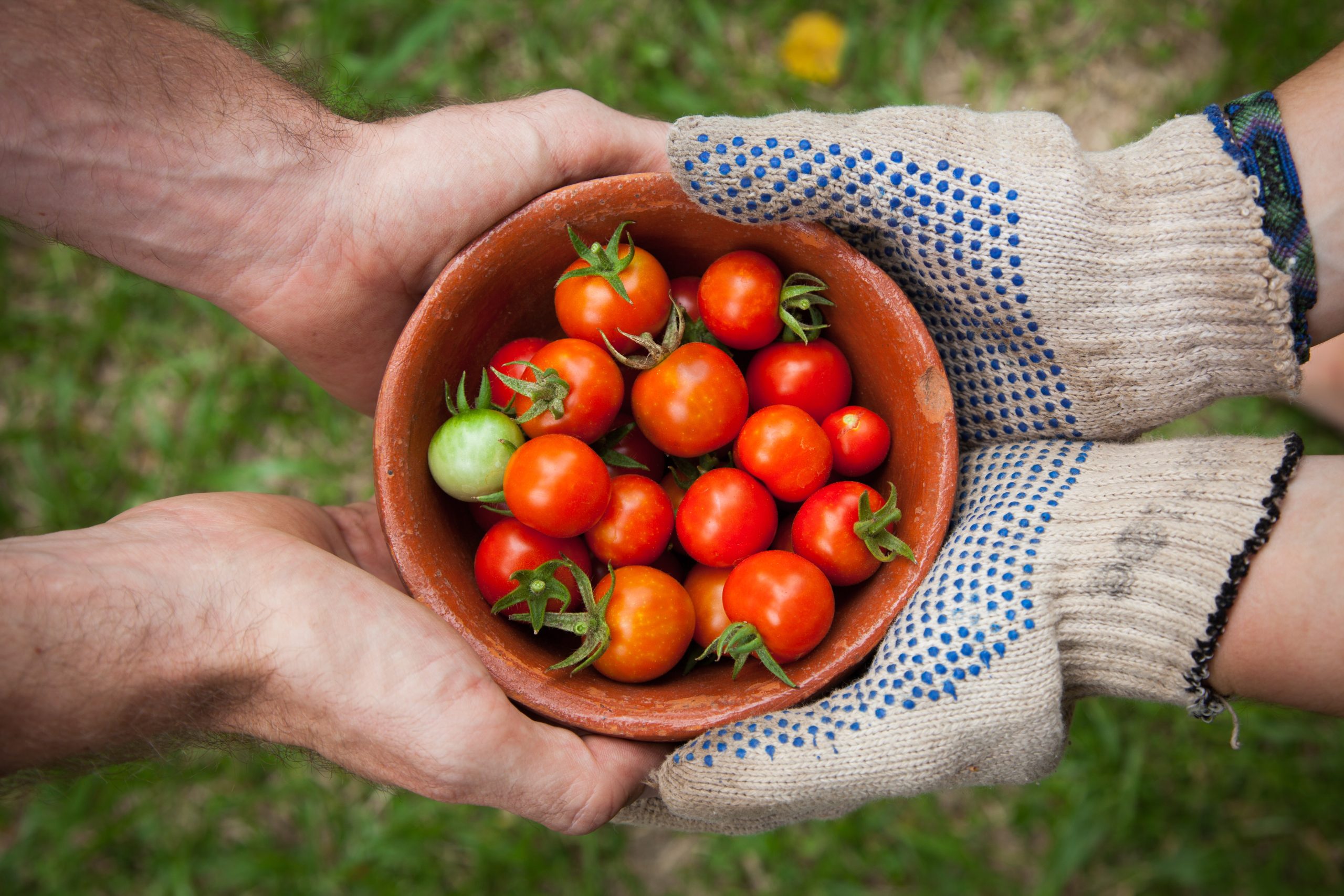In this article we distill key reports and data about the food waste problem, trace responses from government, corporate and nonprofit actors, and reveal the landscape for innovation in the food waste solution sector.
By Grace Perry
The past decade has been a big one for food waste. If you would like to learn more about the beginnings of the food waste problem and data that describes it, we outlined everything you need to know in this earlier article.
Emergence of activity
The National Research Defence Council (NRDC) published a groundbreaking report in 2012 that revealed the staggering impacts of food waste in the United States and later released an updated version of this report in 2017. In 2013, the Food Waste Reduction Alliance (FWRA), a consortium of food industry actors, launched the food industry’s first-ever analysis of food waste data collected directly from food manufacturers, retailers and wholesalers. ReFED (Rethink Food Waste Through Economics and Data) published a report in 2016 that provided a roadmap for addressing food waste through a quantitative cost-benefit analysis of 27 different potential food waste solutions. Since the release of these iconic reports, government agencies, politicians, and corporations and non-profit food businesses have responded to the food waste crisis. Although these stakeholders represent a diverse group, they rally behind waste reduction and innovative solutions. In this article, we investigate how the stakeholder groups respond to the food waste crisis and opportunities for innovators to participate in this promising industry.
Government action

In 2015, the United Nations and the U.S. government declared similar goals to significantly reduce food waste by 2030. The United Nations (UN) agreed to halve per capita global food waste at the retail and consumer levels and reduce food losses along production and supply chains, including post-harvest losses as part of their Sustainable Development Goals. The United States Department of Agriculture (USDA) and the Environmental Protection Agency (EPA) responded to the UN’s goal with their first domestic goal to reduce food loss and waste in half by the year 2030 and called the initiative the U.S. 2030 Food Loss and Waste Reduction goal. As part of this initiative, the EPA established the Food Recovery Hierarchy (pictured above), which is a tool to help organizations understand and prioritize food waste solutions across the supply chain. The EPA also introduced the U.S. Food Recovery Challenge—a program that organizations join and pledge to improve their sustainable food management practices and report their results. The organizations are encouraged to use the EPA’s Food Recovery Hierarchy to prioritize their actions and prevent and divert food waste. According to the EPA’s Food Recovery Challenge Database, there are 734 active participants in the program as of September 2019. This number includes both organizations and businesses that are participants and endorsers, and business franchise locations.
At the policy level, the U.S. federal government introduced a series of food waste legislation in 2015. According to the 2017 NRDC report, the bills were introduced to Congress including legislation to improve food donation tax incentives, the Food Recovery Act, the first-ever food waste bill in the U.S., and the Food Date Labeling Act and the Food Waste Transparency Act. None of these were passed into law, but momentum continued, and only a few years later in 2018, a bipartisan Congressional Food Waste Caucus was initiated to inform national policy (ReFED, 2018). The 2018 Farm Bill also included food waste provisions, including $25 million in annual funding for composting and waste reduction pilots, food waste research, spoilage prevention, and a national milk donation program (ReFED, 2018). Individual states have also introduction food waste-related legislation. For example, in 2016, California signed Senate Bill (SB) 1383 into law. SB 1383 established targets to achieve a 50 percent reduction in the level of the statewide disposal of organic waste from the 2014 level by 2020 and a 75 percent reduction by 2025. Additionally, CalRecycle, a branch of California’s Environmental Protection Agency, granted $10 million to food waste prevention and rescue grantees since 2016 (ReFED, 2018). More recently, since 2018, 91 new pieces of food waste-related legislation were introduced in 30 states and 22 of those have already passed into law (ReFED, 2018).
Corporate commitments

Food corporations have responded to the food waste crisis by pledging to reduce food waste and forming alliances within the industry. The U.S. Food Loss and Waste 2030 Champions, established in part by the USDA and EPA, represents a group of corporations who committed to reducing food loss and waste in their operations in the United States by 50 percent by 2030. In 2017, an-industry wide effort to end consumer confusion about product date labels and help curb food waste started between grocery manufacturers and retailers. The Food Waste Reduction Alliance (FWRA) is an initiative between food and beverage companies, food retailers and the food service industry that aims to reduce food waste and redistribute the surplus to the hungry. The FWRA aims to achieve their goals by conducting research to understand and identify sources of food waste and emerging solutions. They publish their results in a report available to their member organizations and the public. Similarly, the Food Loss and Waste Protocol, a multi-stakeholder partnership comprised of food waste experts, established a standard for businesses and organizations to quantify and report on food loss and waste.
A Roadmap to Reduce U.S. Food Waste by 20 Percent, released by ReFED in 2016, helped connect food waste to the corporate bottom line. The report elucidates the financial and branding benefits associated with corporate commitments to address food waste. They estimate an $18.2 billion profit opportunity for grocery retailers alone (ReFED, 2018). A 2018 U.S. Food Waste Investment Report by ReFED provided an update to this revelation and found that two-thirds of the world’s 50 largest food companies participate in programs with a food loss and waste reduction goal. Domestically, half of all U.S. retailers have committed to the national goal to reduce food loss and waste by 50% in 2030 (ReFED, 2018). More specifically, Kroger’s Zero Hunger campaign includes a commitment to completely eliminate food waste in all stores by 2025 (ReFED, 2018). In 2017, Walmart donated the equivalent of 562 million meals in the U.S. and sold more than 262 million units of food products by reducing the prices of food nearing its expiration date (ReFED, 2018). The report also reveals that many corporations, including General Mills, Tyson, Chipotle and Chobani, have launched internal grant and accelerator programs for food waste innovators.
Non-profit collaboration
Non-profit businesses also play a role in reducing food waste and are currently responding to policies and corporate commitments with innovative solutions. ReFED, mentioned throughout this article, is a nonprofit that connects with decision-makers in the food system to reduce U.S. food waste. The nonprofit represents a cross-sector collaboration between food system businesses, nonprofits, foundations and government leaders, and employs a systems perspective to address food waste (ReFED, 2016). The collaboration seeks to spur economic growth, increase food security and protect the environment. They do this through research and data collection and by publishing reports that reveal food waste innovation opportunities. The San Diego Food System Alliance is another non-profit, multi-sector collaboration that connects, coordinates and catalyzes actions among diverse food systems representatives in San Diego County, California to cultivate a healthy, sustainable and just food system (San Diego Food System Alliance, n.d.). One of many initiatives, the waste food prevention and recovery platform works to address food waste and hunger. The Alliance hosts a Food Waste Solutions Summit to connect their community around food waste and create innovative solutions that address community-specific needs, and was awarded a $500,000 grant from CalRecycle in 2018 to provide tools and technical assistance to large food production companies to reduce food waste and donate edible food (San Diego Food System Alliance, 2018; ReFED, 2018).
Innovation Landscape
The recent advancements in policy, corporate commitments and non-profit activity reveal a conducive landscape for food waste innovation. A 2018 U.S. Food Waste Investment Report by ReFED reveals unprecedented growth in the quantity of new and innovative products and services that address food waste. The report also explains the burgeoning funding options available to food waste innovators and opportunities to innovate.
ReFED identifies a myriad of funding streams open to food waste innovators depending on their stage of growth. In 2018, more than $125 million of venture capital and private equity funding was invested in food waste startups (ReFED, 2018). In addition to private investments, philanthropic funders expanded their reach into food waste investment. ReFED finds that funding from foundations has reached $134 million, which indicates an increase of 70% over five years. Food waste innovators receive support from philanthropic sources such as The Rockefeller Foundation, The Claneil Foundation, The Bill and Melinda Gates Foundation and The Walmart Foundation (ReFED, 2018). Innovators also found success using crowdfunding platforms and accessing capital through public grants and loans, which are typically organized through state government agencies.
Funding opportunities from both the private and public sector signal great promise for food waste innovation at any scale. While funding from large foundations is not always attainable for innovators of all scales, ReFED’s research reveals that local-scale innovations also have a place in the market. Place-based innovations that make a direct community impact are sought after and eligible for grants and funding through local agencies. For innovators who desire to scale up from the local market, there are a growing number of accelerator programs that provide training and help food waste innovators scale their business models. ReFED’s Nonprofit Food Recovery Accelerator, for example, provides 10 nonprofits financial support and business development that help catalyze innovators to the next stage in the market.
Opportunities to Innovate

With wide-spread acknowledgement and financial investment, the question transforms from how to what—what are the most salient innovation opportunities? ReFED’s Roadmap identifies opportunities that align with the EPA’s Food Recovery Hierarchy priorities to reduce food waste. ReFED identifies that innovations in the prevention category, such as Apeel and Fresh AI, which stop waste from occurring in the first place, have the most potential and economic benefit. Apeel invented a plant-based peel that covers the surface of spoilage-prone fruit and extends its shelf life, while Fresh AI advances the grocery supply chain by helping restaurants, grocers, c-stores and wholesalers predict stock lists and consumer demand more accurately, thus cutting food waste. The recovery category, which redistributes food to people in need, contains the next best potential. RePlate, a food rescue tech nonprofit based in 300 cities in North America, does exactly this. RePlate distributes food from businesses to community organizations in need. As a B to B tech nonprofit, RePlate is a scalable business model that streamlines food recovery to help those in need. Lastly, innovations such as Renewal Mill that address recycling, or repurposing waste as energy, agricultural, and other products, should be considered after prevention and recovery solutions. Renewal Mill captures the byproduct of soy milk, called okara, and transforms it into a nutrient-rich flour that can be used to make vegan and gluten-free baked goods
When considering how these prioritizes align with funding opportunities, ReFED reveals that food waste projects linking food waste diversion to hunger alleviation qualify for more funding possibilities. Additionally, recovery innovations currently have the highest level of existing funding, while recycling projects have the lowest level of existing funding (ReFED, 2018). In terms of monitoring progress, the report also describes a need for consistent and universal measurement of progress toward reducing food waste, which opens the door for food waste innovators interested in evaluation. Now that the innovation landscape is painted, the next article will identify key innovators and describe how they work within the landscape to conquer the food waste crisis.
About the Author: Grace Perry is a graduate student in Community Development at the University of California, Davis. Her research focuses on food system governance and community engagement with food systems change. Grace has a background in marketing and agriculture, and finds the intersections of agriculture, climate change and food justice especially interesting.
References
Food Waste Reduction Alliance (FWRA) (n.d.). Retrieved from https://foodwastealliance.org/
Gunders et al. (2017). “Wasted: How America is Losing up to 40 Percent of its Food from Farm to Fork to Landfill [PDF File].” Natural Resources Defense Council. Retreived from https://www.nrdc.org/sites/default/files/wasted-2017-report.pdf.
Gunders et al. (2012). “Wasted: How America is Losing up to 40 Percent of its Food from Farm to Fork to Landfill [PDF File].” Natural Resources Defense Council. Retreived from https://www.nrdc.org/sites/default/files/wasted-food-IP.pdf.
Rethink Food Waste through Economics and Data (ReFED) (2018). “2018 Food Waste Investment Report [PDF File]”. Retrieved from https://www.refed.com/downloads/ReFED_Report_2016.pdf.
Rethink Food Waste through Economics and Data (ReFED) (2016). “A Roadmap to Reduce US Food Waste by 20 Percent [PDF File]”. Retrieved from https://www.refed.com/downloads/ReFED_Report_2016.pdf.
San Diego Food System Alliance (n.d.). Retrieved from http://www.sdfsa.org/the-alliance
San Diego Food System Alliance (2018). “Press Release: San Diego Food System Alliance Receives Half a Million Dollar CalRecycle Grant to Reduce Food Waste in San Diego”. Retrieved from http://www.sdfsa.org/blog/2018/1/23/press-release-san-diego-food-system-alliance-receives-half-a-million-dollar-calrecycle-grant-to-reduce-food-waste-in-san-diego
Wasted Food Prevention and Recovery Group (n.d.). Retrieved from http://www.sdfsa.org/wasted-food-prevention-recovery

